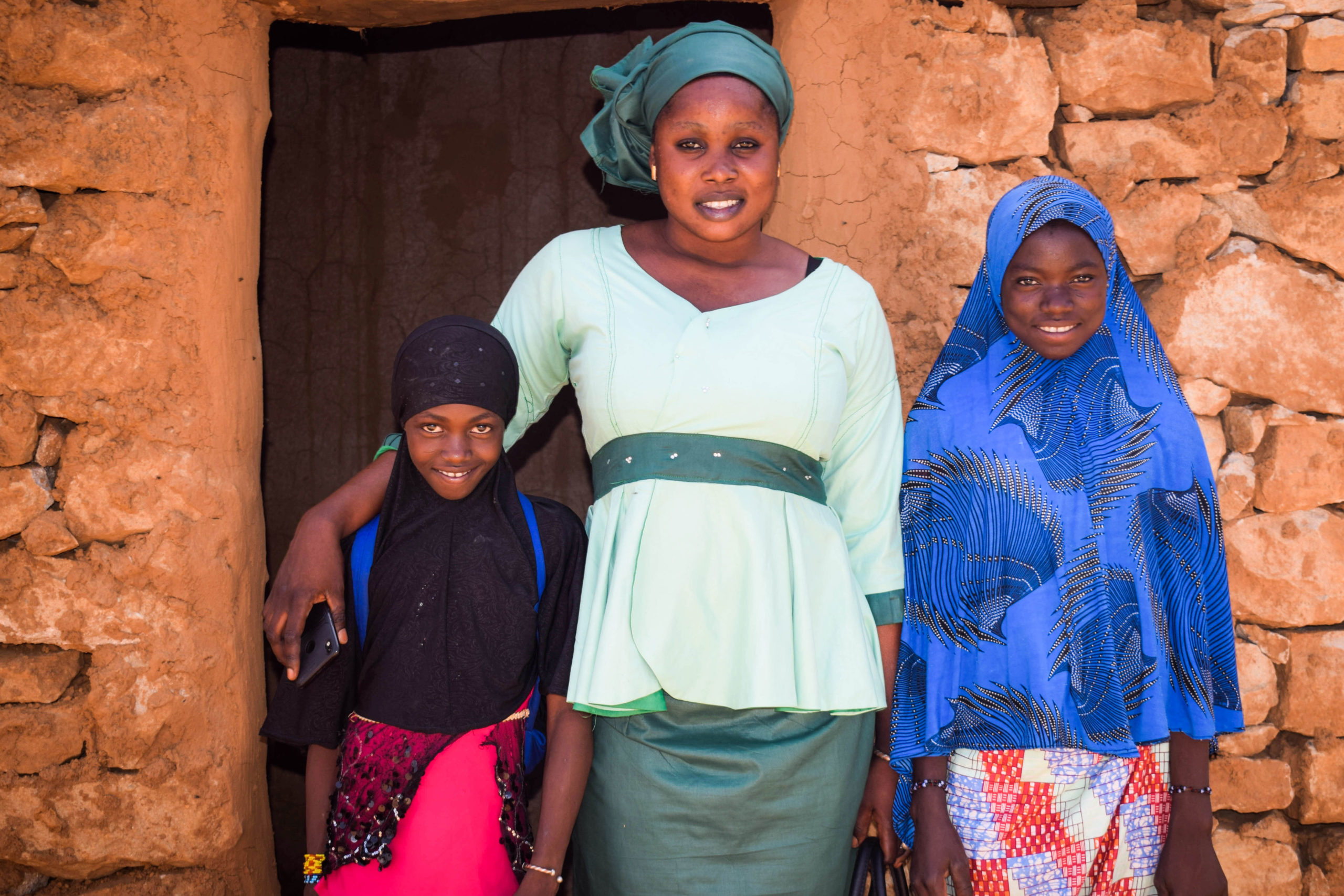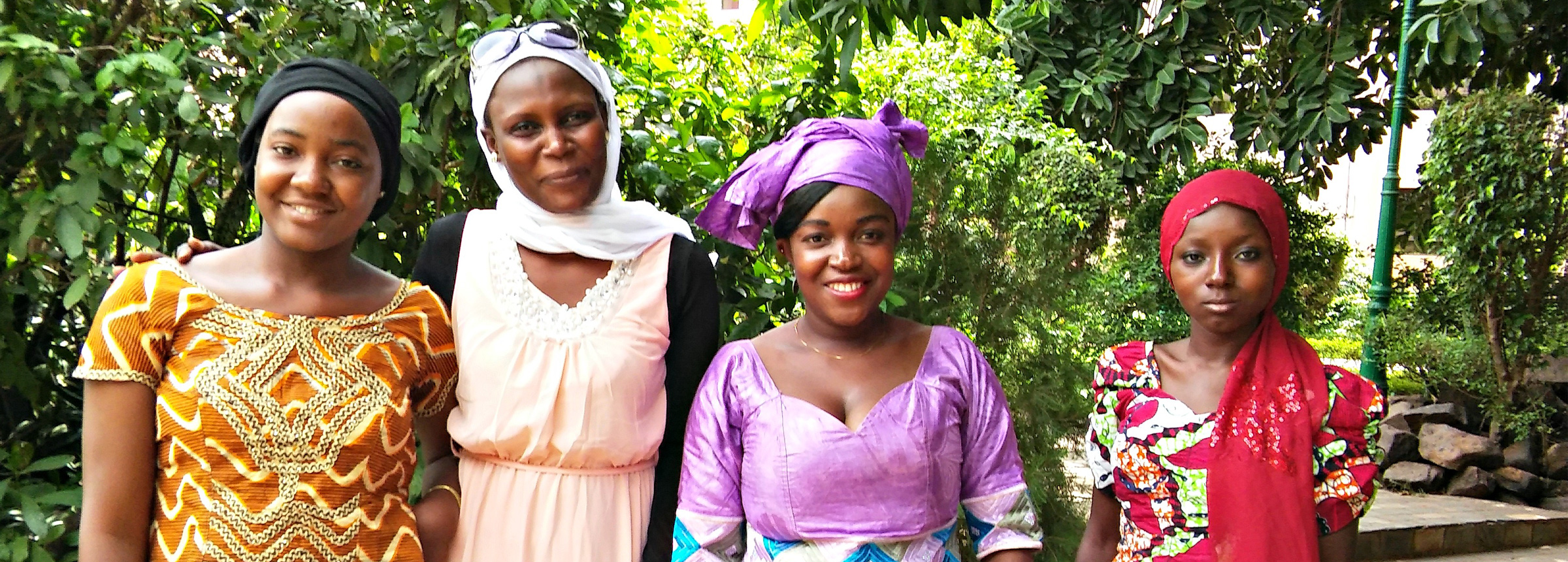
Educating girls, changing lives
Against fierce odds, a village bands together to protect a school for girls in rural Mali
Every weekday morning, 26-year-old teacher Fily Camara drives nearly two hours from her home in Bandiagara along dusty roads to a rural village called Tongnon. Sometimes, she admits, she’s scared. Outside the cities of this hot, arid country just south of the Sahara Desert, armed militants are known to attack or kidnap motorists as an intimidation tactic — government officials and teachers in particular.
Nonetheless, Camara never misses a class. “I have to come,” she says. “I’m paid to do a job, and it’s a job I like.”
When she arrives in Tongnon (pronounced “Tone-Yone”), Camara takes her place at the head of a humble classroom of 40 students, who range in age from 10 to 14. Thirty-eight of them are girls. None had attended school before.
“They didn’t know even one letter,” Camara says. “Now they can all read and write.”

The school is one of 336 accelerated schooling centers operated by the USAID-funded Mali Girls Leadership and Empowerment through Education (GLEE) project, implemented by Winrock International. The project seeks to increase access to education for adolescent girls, improve their safety in schools and their communities, and increase girls’ knowledge and adoption of positive health behaviors.
The accelerated schooling centers are designed for out-of-school girls ranging in age from 10 to 14 years old. They condense three years of schooling (grades one through three) into a nine-month program using interactive, child-centered methodologies. Once a girl passes the course at the end of the nine months, the GLEE project supports her to enroll in formal government primary school, which GLEE also supports through other activities.
This year, GLEE accelerated schooling centers enrolled 3,057 girls between the ages of 10 and 14. An additional 14,670 girls between the ages of 10 and 18 attended government-run primary and secondary schools supported by the GLEE project, bringing the total of girls reached with U.S. government funding in 2018-19 to 17,727.

Witnessing the effect of the program on the local level is moving. In the midst of a teachers’ strike that shuttered Mali’s government-run schools for six months, the people of Tongnon were so delighted to have a school that they collectively volunteered to provide security. Mali is still recovering from a 2012 rebellion and coup d’etat, and some terrorist groups target schools. Ethnic conflicts between farmers and herders have also resulted in increased violence.
“We know anything can happen at any time, here or elsewhere [in the province],” says Malik Nantoumé, 56, who leads security efforts for the Tongnon school. “This is our village and these are our children. We must protect them.”
While not every GLEE school has an entire village protecting it, each has developed an emergency plan to prepare for disasters relevant to their region. In the Mopti province, where Tongnon is located, participants plan for school evacuations in the event of an armed terror attack, kidnappings and improvised explosive devices.

Still, 11-year-old Sali Kassogue says she feels safe at school. Sali, who has two sisters and a brother, is the first child in her family to get an education. When her parents learned she had a chance to attend school, they were overjoyed — and she has made the most of the opportunity. Since starting in October 2018, Sali has become the top student in Tongnon, learning French, reading and math. Even though she is shy — when asked questions, she pulls at her black headscarf to cover her face — Sali has definite plans for her future.
“I want to be like my teacher,” she says, clinging to Camara’s colorful dress, “and teach other children.”
A former university student, Camara says her education provided the opportunity to pursue a life of greater independence.
“I’ve been to school, and it’s because of that I can be a teacher today,” she says. “If I hadn’t been to school, today I would be married and cooking for my husband.”

Girls’ education is particularly important in places like Mali, which has the fifth-highest fertility rate in the world and some of the highest infant, child and maternal mortality rates in Africa. The average Malian woman bears six children and gives birth for the first time at age 18. That’s why, in addition to their academic subjects, GLEE students learn how reproductive health affects their development and academic success. Each school also has a tip box where girls can anonymously report gender-based violence.
Camara draws encouragement from the improvement she’s seen in students such as Sali. When Sali first arrived at school, she seemed to stare off into the distance, as if she didn’t notice what the rest of the class was doing. Little by little, she rose to become the top student. And there’s more good news: All 40 of the Tongnon students have gone on to attend government schools, increasing their prospects for the future.
“I can improve their lives through education,” Camara says. “Even if they just know how to read and write, it will benefit them wherever they go.”
Related Projects

